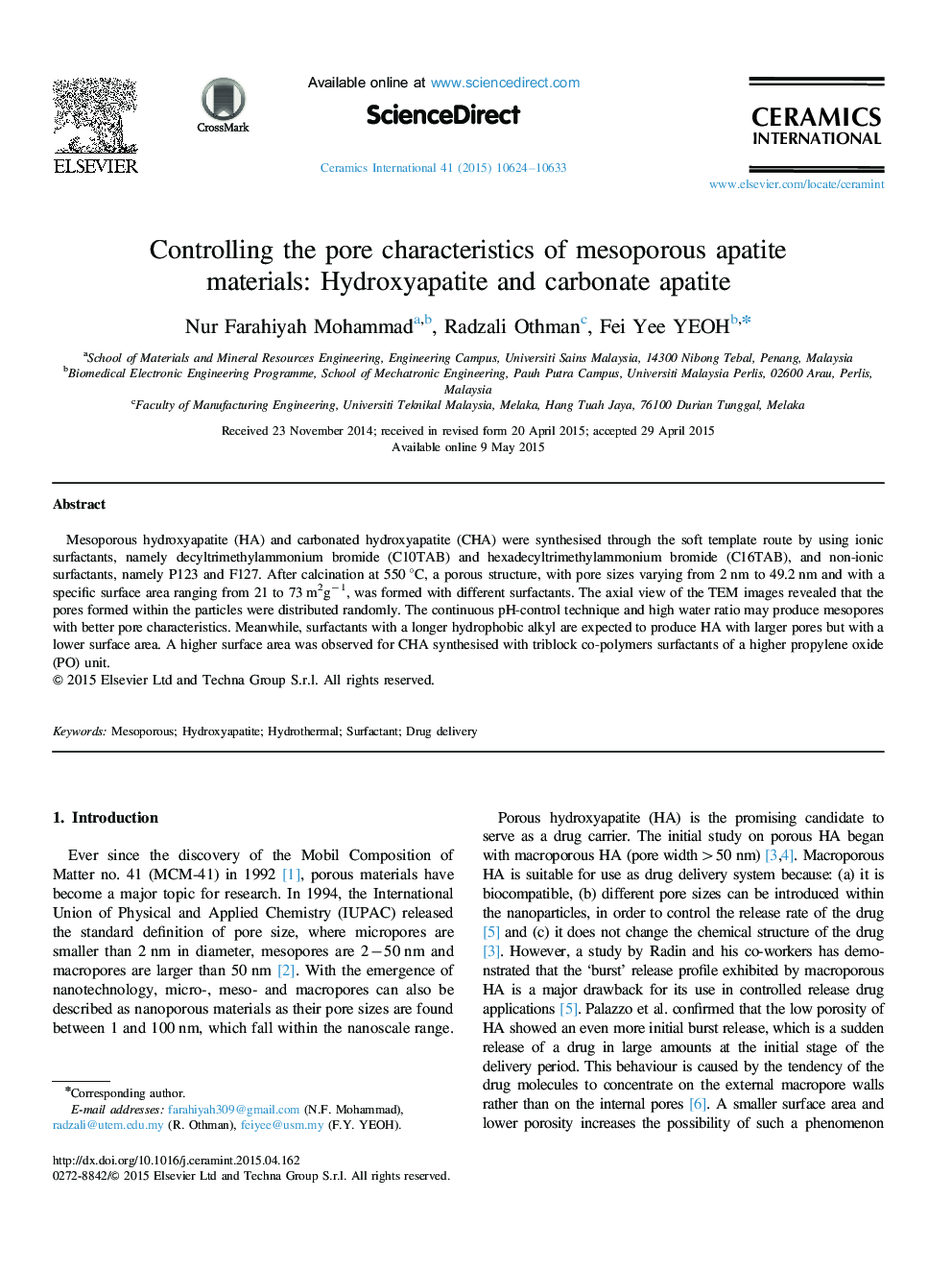| Article ID | Journal | Published Year | Pages | File Type |
|---|---|---|---|---|
| 1460022 | Ceramics International | 2015 | 10 Pages |
Mesoporous hydroxyapatite (HA) and carbonated hydroxyapatite (CHA) were synthesised through the soft template route by using ionic surfactants, namely decyltrimethylammonium bromide (C10TAB) and hexadecyltrimethylammonium bromide (C16TAB), and non-ionic surfactants, namely P123 and F127. After calcination at 550 °C, a porous structure, with pore sizes varying from 2 nm to 49.2 nm and with a specific surface area ranging from 21 to 73 m2g−1, was formed with different surfactants. The axial view of the TEM images revealed that the pores formed within the particles were distributed randomly. The continuous pH-control technique and high water ratio may produce mesopores with better pore characteristics. Meanwhile, surfactants with a longer hydrophobic alkyl are expected to produce HA with larger pores but with a lower surface area. A higher surface area was observed for CHA synthesised with triblock co-polymers surfactants of a higher propylene oxide (PO) unit.
